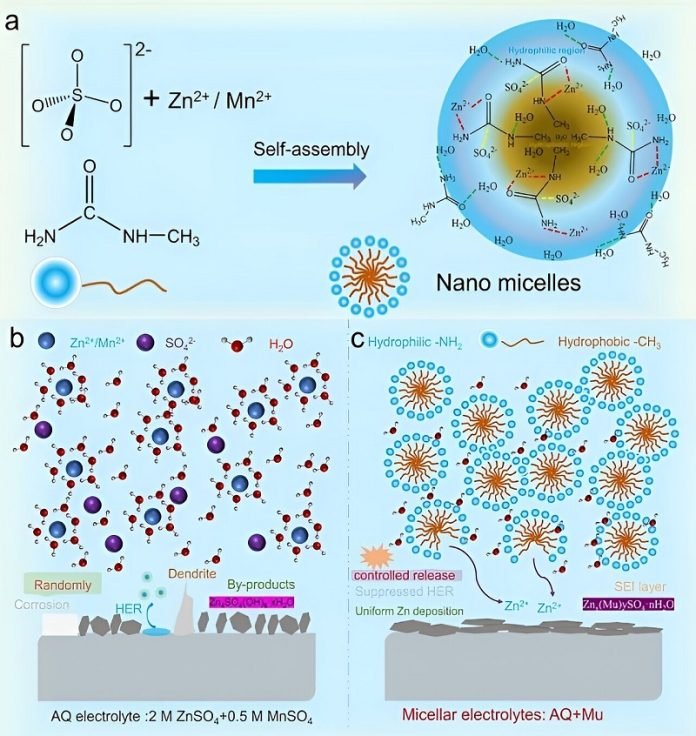
Are you ready for batteries that could change how we store clean energy?
Scientists from the University of Science and Technology of China have created a new kind of battery that is incredibly powerful and long-lasting.
They used a special liquid called a nanomicellar electrolyte, made of water and other ingredients, to create a zinc-manganese (Zn–Mn) battery.
Batteries are everywhere – in our phones, cars, and even power grids. But not all batteries are equal.
Most common batteries have issues like not lasting long, or using harmful chemicals. This new battery, however, is different.
Zinc-manganese batteries are great for storing clean energy. But, usually, they have a big problem: the zinc part corrodes or breaks down easily, making the battery less effective over time.
This happens because of something called an irreversible electrochemical reaction.
That’s a fancy way of saying the battery can’t “undo” the chemical changes that happen when it’s used, which causes damage.
The Chinese researchers solved this problem by using a special liquid, called a nanomicellar electrolyte. Imagine this liquid is like a protective bubble.
It surrounds the zinc and manganese ions, keeping them stable and preventing them from breaking down too quickly.
This liquid has two parts: a water-loving (hydrophilic) area and a water-hating (hydrophobic) area.
This allows the zinc and manganese ions to be kept in tiny pockets or ‘nanodomains’. This special setup breaks the normal bonding of water molecules, making the battery’s chemical reactions more stable and reversible.
In simpler terms, the battery can now undo its chemical changes, making it last longer without losing power. Also, it protects the zinc from corroding, which is often a big problem in these types of batteries.
The researchers ran a lot of tests to confirm their findings. They used techniques like scanning electron microscopy and X-ray diffraction.
These tests showed that the battery has an energy storage capacity of an incredible 800.4 Wh per kg (based on the material that’s active in the battery).
It can also reach a discharge voltage of up to 1.87 V. What does this mean? This battery can store a lot of energy and deliver it quickly when needed.
A super-powerful and stable battery like this could be a game-changer for renewable energy. It could help us store solar or wind energy more efficiently.
Imagine electric cars that can go much further on a single charge, or power grids that can store a lot of clean energy for use anytime.
This research is an important step toward cleaner, more efficient energy solutions. It upgrades what we know about batteries and gives us new ways to keep them stable and powerful for longer periods.
And who knows? It could be the future of how we store and use energy.
The study was published in the Journal of the American Chemical Society.
Follow us on Twitter for more articles about this topic.
Source: University of Science and Technology of China.
Schematic diagram of nanomicellar electrolyte. Credit: University



